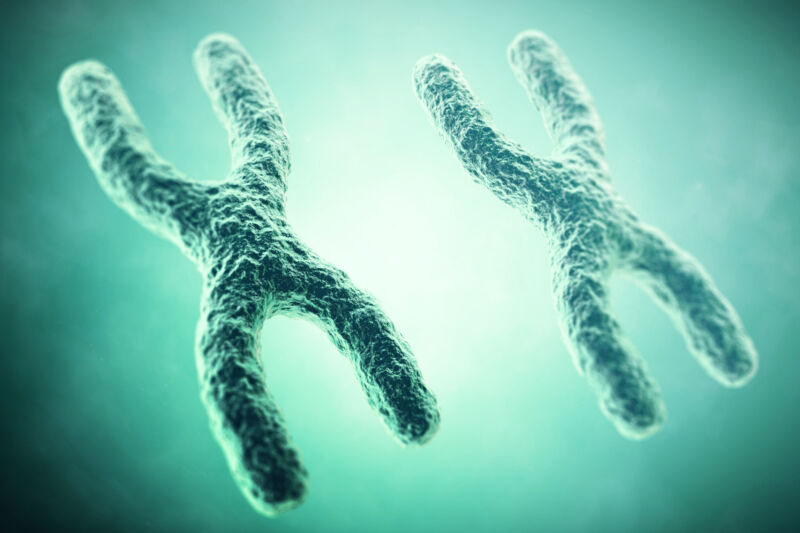

New paper explains why females are prone to autoimmune diseases
source link: https://arstechnica.com/science/2024/02/female-propensity-for-autoimmune-diseases-tied-to-x-chromosome-inactivation/
Go to the source link to view the article. You can view the picture content, updated content and better typesetting reading experience. If the link is broken, please click the button below to view the snapshot at that time.
It's Xist —
New paper explains why females are prone to autoimmune diseases
A system that shuts down one of two X chromosomes is targeted by auto-antibodies.
Diana Gitig - 2/6/2024, 5:54 PM

Eighty percent of patients with autoimmune diseases are female. These diseases are one of the top 10 leading causes of death for women under 65, and cases are increasing annually worldwide. There is evidence suggesting that it's females’ double complement of X chromosomes that puts them at such heightened risk for autoimmune diseases. Female cells have two X chromosomes, whereas males have one X chromosome and one Y chromosome (at least in mammals).
Shutting down an X
Different animals compensate for this sort of disparity in different ways. Male fly cells churn out twice the amount of the proteins encoded by their single X chromosome, so they end up with the same amount as female cells. Worm hermaphrodite cells reduce production of the proteins encoded by each of their X chromosomes by half, so they end up with the same amount as male cells.
Mammals use X inactivation, in which each female cell shuts off one of its X chromosomes and only uses the other. Which X chromosome is shut off (the paternally inherited one or the maternally inherited one) is random and independent within each cell. So women are all genetic mosaics: Their cells are not all making the same proteins since some of their cells use one of their X chromosomes and some of their cells use the other.
X inactivation is achieved by a complex of proteins and an RNA called Xist. The inactivated X chromosome makes Xist, which establishes an X-inactivation center on that chromosome. It then recruits proteins to bind to it, and these eventually cover up the entire chromosome so it can’t be used. Since male cells don’t have a second X chromosome, they don’t make Xist.
AdvertisementOne suggestion for why women are more susceptible to autoimmune disease is the pregnancy-compensation hypothesis, which posits that women’s immune systems have to be super vigilant to cope with the potentially dangerous foreign bodies that got implanted in them regularly and frequently throughout human history (placentas and fetuses). Now, women have birth control and don’t spend most of their adult lives pregnant, but their overactive immune systems haven’t yet learned to calibrate, the idea goes, so they attack the body's own tissues.
Xisting autoimmunity
To examine the role Xist might play in autoimmune diseases, a group of researchers at Stanford University put a gene for Xist into male mouse cells. The Xist they used is mutated; it doesn’t have the gene-silencing function of regular Xist since that would shut off a chromosome, killing the mice. But it does still bind to almost all of its protein partners.
Most of the male mice expressing Xist developed an autoimmune disease (lupus was the specific model they used) and achieved “female-level severe pathology,” which included multi-organ autoimmune pathology along with abnormal B and cells. B cells are the ones that make the autoantibodies, and the B cells in these male mice mimicked those in females with autoimmune diseases—they were hyperproliferative and hyperinflammatory. T cells showed the same profile and made less of the molecules that usually help T cells regulate self-tolerance and immune modulation.
Thirty Xist binding proteins have already been reported to be targets of antibodies in human autoimmune diseases, which is what spurred this study in the first place. These researchers further identified another 28 new Xist-binding proteins to which the autoimmune sera specifically reacted.
Physicians and scientists have long known that (1) women get more autoimmune diseases than men; (2) dosage compensation for the second X chromosome in female cells likely played some role in that; (3) RNA-protein complexes are often targeted by autoantibodies; and (4) Xist is part of an RNA-protein complex involved in X inactivation. Yet no one had ever looked to see if Xist itself might underlie the greater propensity of women to develop autoimmune diseases. Finally, someone put all these logical pieces together and found out that it does. Hopefully, this research will reveal some new and effective targets for the diagnosis, monitoring, stratification, and treatment of this suite of diseases.
Cell, 2024. DOI: 10.1016/j.cell.2023.12.037
Recommend
About Joyk
Aggregate valuable and interesting links.
Joyk means Joy of geeK